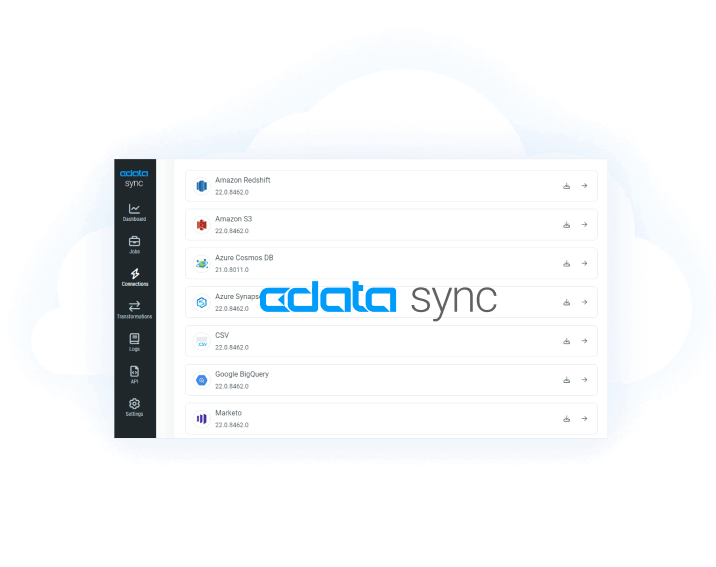Discover how a bimodal integration strategy can address the major data management challenges facing your organization today.
Get the Report →CData Software - Knowledge Base
Latest Articles
- Replicate Data from Multiple Files in an Amazon S3 Bucket Using CData Sync
- Replicate Data from Multiple Local Files Using CData Sync
- Driver Guide: Marketing Analytics Predefined Reports
- Displaying Data from Related Tables Using Angular with Connect Server
- Deploying CData Sync in a Kubernetes Environment
- Excel Add-In Getting Started Guide
Latest KB Entries
- Jetty Security Notice Overview
- Upsert Salesforce Data Using External Id in SSIS
- NuGet Repository Overview
- SAP Drivers Overview
- Embedded Web Server (.NET) - Potential Medium Security Vulnerability
- Configuring Incremental Replication in CData Sync
ODBC Drivers
- [ article ] Using CData ODBC Drivers in Mac & Linux/Unix ...
- [ article ] Use the CData ODBC Driver for NetSuite in ...
- [ article ] SQL Gateway Overview
- [ article ] ODBC Driver Getting Started Guide
JDBC Drivers
- [ article ] Use the CData JDBC Driver for Salesforce in ...
- [ article ] Amazon Redshift: Million Row Challenge
- [ article ] A Comparison of Drivers for Elasticsearch
- [ article ] Standards-Based Access to NoSQL Data Sources
SSIS Components
- [ article ] Perform API Operations Using the CData SharePoint ...
- [ article ] Create CRM Accounts from QuickBooks Customers
- [ kb ] SSIS Components: The PerformUpgrade Method Failed
- [ kb ] CData SSIS Packages for Azure Data Factory
ADO.NET Providers
- [ article ] LINQ to QuickBooks
- [ article ] OLAP Reporting Directly from QuickBooks using ...
- [ article ] Perform API Operations Using Stored Procedures in ...
- [ article ] Using IMAP with the Gmail Data Provider
BizTalk Adapters
- [ article ] Tutorial: Create and Process Updategrams with the ...
- [ article ] Configuring a Receive Location for the CData ...
- [ article ] How to Generate Updategrams with the CData BizTalk ...
- [ article ] How to Execute Stored Procedures with the CData ...
Excel Add-Ins
- [ article ] Start and Stop Windows Services Using the CData ...
- [ article ] Insert Invoices with the Excel Add-In for ...
- [ article ] Import Salesforce Data into Microsoft Power Query
- [ article ] Transfer Company File Data using the CData Excel ...
API Server
- [ article ] Launch the CData Connect AMI on Amazon Web ...
- [ article ] Easily Integrate with Any RESTful API Using the ...
- [ article ] How to Build Dynamic React Applications with ...
- [ article ] Launch the CData Sync AMI on Amazon Web Services
Data Sync
- [ article ] Deploying CData Sync in a Kubernetes Environment
- [ article ] Configuring Oracle Autonomous Database as a CData ...
- [ article ] Replicate Data from Multiple Files in an Amazon S3 ...
- [ article ] Launch the CData Sync AMI on Amazon Web Services
Windows PowerShell
- [ article ] PowerShell Cmdlets Getting Started Guide
- [ article ] Reconciling Authorize.net Transactions with ...
- [ article ] Import QuickBooks Online Data to QuickBooks ...
- [ article ] Start and Stop Windows Services Using the CData ...






